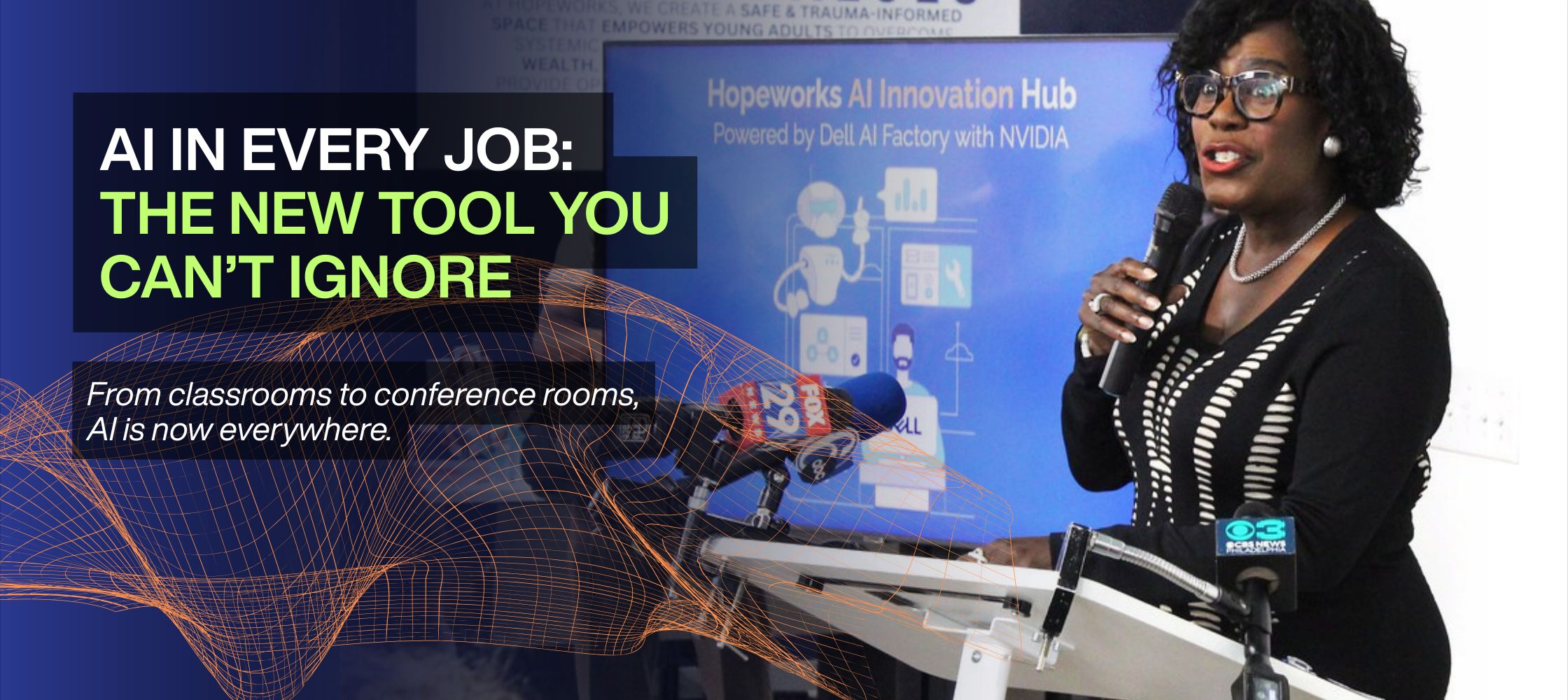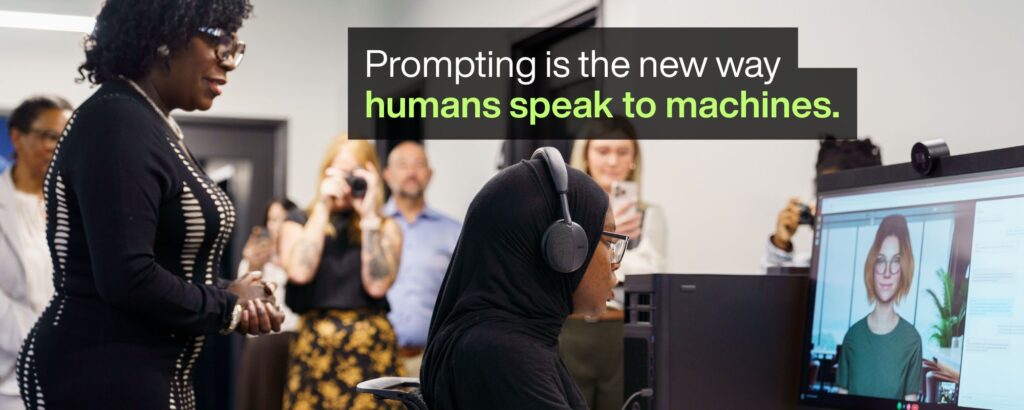
Think back to when driving became a universal skill. Before cars, mobility was limited. Once driving spread, it wasn’t optional—you needed a license to get to work, participate in community life, and unlock opportunity.
Prompting is today’s equivalent. It’s the new license for the AI future. Whether you’re an educator planning lessons, a worker managing spreadsheets, a city leader coordinating services, or a student writing a resume—AI will be there. And those who know how to “drive” it through effective prompting will move faster, go further, and open doors others can’t.
The stakes couldn’t be higher: if we don’t equip the next generation with this literacy, they’ll be locked out of the jobs and opportunities that define the AI economy.

Not long ago, people thought AI was only for coders or data scientists. Today it’s showing up in classrooms, construction sites, and conference rooms. It’s in email drafts, lesson plans, job applications, even how businesses run payroll.
And here’s the reality: every AI system—from copilots in Word and Excel to customer service chatbots, robotic systems, and agentic workflows—depends on prompting. Prompting isn’t about knowing a single tool like ChatGPT. It’s about knowing how to communicate clearly with machines so they produce the outcome you want.
Just like typing became the baseline skill of the computer age, prompting is becoming the baseline skill of the AI age.
Students are already using AI—for homework, resumes, even job interview prep. Pretending it isn’t happening only widens the gap between what they’re doing outside class and what they’re allowed to do inside it.
The responsible path isn’t avoidance—it’s guidance. And it starts with educators using AI themselves. Imagine what happens when you:
By embracing AI in your own work, you’ll be ready to guide your students—not just restrict them. If every teacher becomes fluent in prompting, every student can graduate ready to thrive.
Career pathways are changing faster than ever. In the near future, every role—whether in healthcare, logistics, marketing, or construction—will include an AI co-pilot or automated workflow. That means prompt literacy isn’t optional for workers, any more than knowing how to type was optional in the 1990s.
Workforce leaders need to:
The danger isn’t AI replacing jobs—it’s workers who don’t know how to use AI being replaced by those who do.
This isn’t just about schools buying gadgets. It’s about building systems that give every student and worker the chance to become AI-literate. Just like driver’s education and licensing programs made driving universal, we need public investment and clear standards for prompting literacy.
Policymakers and leaders must:
If we fail to act, we risk creating a generation left behind—not because they lacked talent, but because they lacked access to the most basic skill of the AI era.
AI is no longer a niche technology—it’s in every job, every workflow, every industry. Prompting is how we unlock its power.
The question isn’t whether people will use AI. They already are. The question is whether educators, workforce leaders, and policymakers will step up to prepare everyone to use it well.
Driving gave people freedom, mobility, and access to opportunity. Prompting will do the same in the AI future. But only if we teach it, support it, and scale it now.
Because in every job, across every industry, and in every community—prompting is the skill no one can afford to ignore.
Authored by Dave Taddei, Builder-in-Residence, AI Innovation Hub, Hopeworks